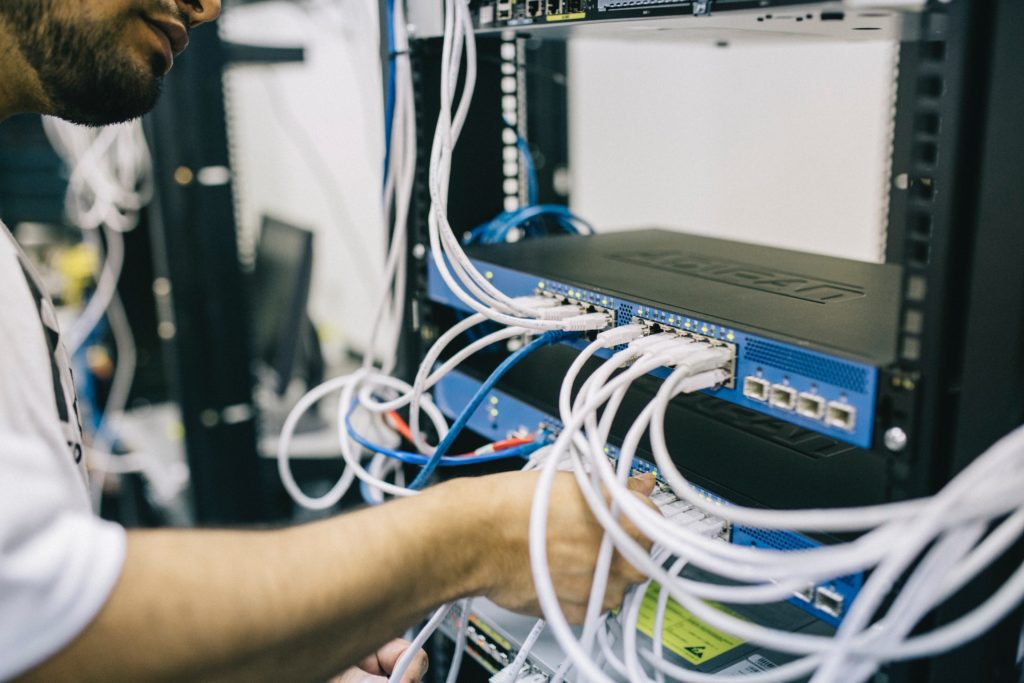As most business owners are aware, technology and software are improving and changing at a rapid rate. This can be hard to keep up with when it comes to your internal systems and processes. Every now and then, the question of replacing a legacy system will come up, and will often create problems for those that the systems impact. In some cases, it is abundantly clear that things need to change and the system needs to be replaced. Other times, replacing the legacy system wouldn’t bring any concrete benefits.

The 2021 “IT Trends Study” from the Society for Information Management (SIM) found that replacing legacy applications was one of the top 10 largest IT investments for organizations in 2020, as it has been for each of the three previous years. Not only that, but a survey from AWS found that 70% of chief experience officers at global companies list legacy modernization as a top strategic business priority.
The Problem with Legacy Systems
Many organizations struggle with replacing outdated software and legacy systems that no longer function efficiently. Even highly structured organizations such as NASA and the Federal Government experience this. The main struggle organizations face is the difficulty in managing legacy systems, and integrating them with newer software. Legacy systems are computer programs that were created before wide-scale internet use and are now outdated. They typically remain in place because of vendor lock-in, the expense to replace them, or because of difficulty migrating data.
The difficulty in integrating these systems is two-fold. First, there’s a decreasing number of people who have knowledge of these legacy systems. IT professionals that understand the coding of these systems are retiring. Second, legacy systems typically cannot work with new software due to differences in functionality. For example, mobile features didn’t even exist when these systems were created and are impossible to implement.
Replacing vs. Maintaining legacy systems
Of course, whenever there is a choice to be made, it is important to weigh up your options. While modernization might be an important factor, organizations often opt to maintain their legacy systems rather than replace them. Let’s see why.

Cost Considerations
Upgrading to newer technologies does of course bring a certain level of value to any business. Generally, businesses see increased revenue or lower operating costs. However, in some cases, the cost of the upgrade exceeds the value that the upgrade would provide, at least in the short run. If a business operates on small margins or is experiencing decreased demand, replacing a legacy system might not be a priority. In this case, the costs of maintaining the legacy system outweigh the benefits of replacing it.
Reliability & Familiarity
Replacing a legacy system is going to create a lot of change in your business. Those who use the systems need to be trained on the new software, and this might impact other operations too. Along with that, a legacy system generally lasts so long due to its known reliability. Employees know what the system is capable of, and know the core functions well. All of this is thrown into the unknown. Employees need to learn the limits of the new software and understand how the new system can support the business.
Benefits of Replacing Legacy Systems
Exchanging outdated legacy workforce management systems for modern solutions can be labor-intensive and requires new investment in IT. While the exchange process can be timely and costly, keeping legacy systems around can cost you even more. Most often, it is worth the time and investment to exchange systems.
Business growth and development
As a business grows and develops, it can outgrow the key functions of its legacy systems. Operations may need to be scaled, strategies and objectives change, and with that, systems need to improve. In these cases, the business value generated from an upgrade always exceeds the savings from maintaining older, legacy systems.
Automation
Automation is essential for businesses that are growing and scaling operations. Legacy systems often lack the ability and features needed to automate essential processes that can improve productivity and profitability. This is another area where the opportunities for upgrading outweigh the benefits of maintaining a legacy system.
Attract and Retain Talent

Depending on your industry, your systems might be a key factor in attracting and retaining top talent for your business. More often than not, employees want to work with the latest technologies and to work for forward-looking companies. Those who fail to replace legacy systems and embrace change will struggle to hire new talent.
There are far more benefits to replacing legacy systems than there are to maintaining them. However, as we mention above, there are cases where maintenance makes sense. Celayix helps companies make the change with their workforce management systems to improve operations and save money. Here are two examples of how legacy systems can impact an organization, and the improvements that come with replacing them.
North Shore Community Action Program
Legacy systems are often more likely to crash. This is usually because they are phasing out, and receive very few if any, performance updates. Plus, with only a few people who understand how to troubleshoot these systems, a crash can mean a big interruption in business operations. At North Shore Community Action Programs in Massachusetts, the crash of their legacy workforce management software prompted the replacement and upgrade to an Advanced Workforce Management Solution. Their old system was cumbersome to operate, with data existing in multiple locations, and caused delays in payroll and billing by multiple days. With their new system, they reduced their payroll processing time by 75% and can receive payment from accounts receivable up to a month sooner than before.
Ordway Center for the Performing Arts
At Ordway Center for the Performing Arts, they were using a custom legacy workforce management system, operating on a DOS file system. A custom legacy system like theirs served well for many years. However, it became extremely outdated and failed to completely serve their needs. Simple tasks like printing a schedule or switching screens proved time-consuming and required workarounds.
With new scheduling and time & attendance system, they are now able to perform workforce management tasks in less than half the time. Their new system also ensures that scheduling follows union rules such as seniority. Through the web portal, they can easily see employee availability and shifts in a calendar view. This improved staff morale, and they were able to save lots of paper too!
If you would like to upgrade your workforce management platform, book a free consultation with our Solutions Advisors to see how Celayix can help.




